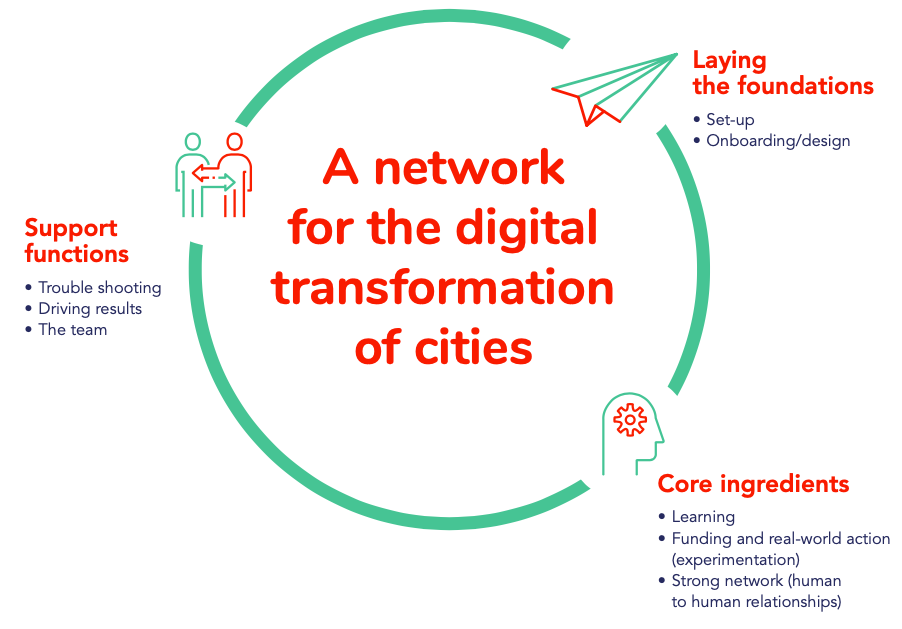Blueprint
Why we’ve written this blueprint
This blueprint was written to help current and future operators of networks of cities learn from the work of the African Smart Towns Network (ASToN). It reflects the methods we used to set up ASToN. In it, we aim to share some lessons we learned from launching a network of cities that want to use digital tools to address local and global challenges. We’ve broken down our experience and what we learned from it across the different phases of the network, which we hope people in similar situations can pick up, learn from and use. Each section corresponds to a phase in the inception, delivery and closing of this first ASToN program (2019-2022). And although they are presented as a linear process, our experience has not been and things have at times overlapped, which we expect would be the case of anyone running a similar process.

Throughout this blueprint, we use the term “city” to design any form of local government in charge with the provision of urban services. Throughout ASToN (2019 – 2022), we worked with municipalities, development agencies, public authorities or even regional entities that were in charge with the urban issues over their territory. This depended on the local context and legislation for each of the 11 countries. When we mention “city leaders”, we mean the representatives of the 11 local authorities, in charge with the local ASToN project. From one case to another, they can be Mayors, City Councillors, Senior Executives, Chief Officers in charge of Planning, Urban Affairs, ICT and more.


 Download document
Download document